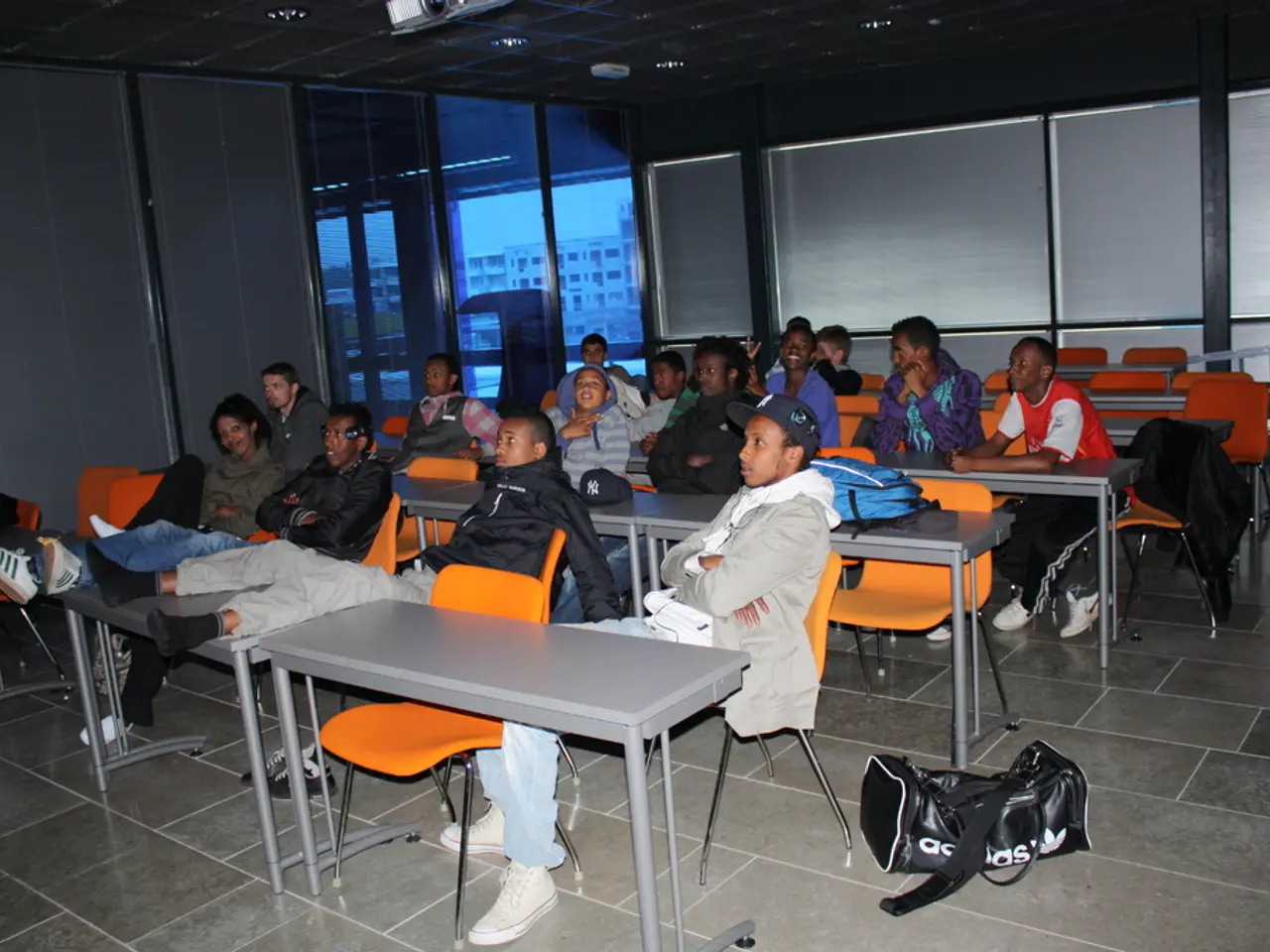Online Education Strategies for Optimal Student Achievement
In the wake of the pandemic, K-12 education has undergone a significant transformation, with video conferencing, online assessments, virtual tutoring sessions, and online classrooms becoming the new normal. This shift has highlighted the importance of high-quality online instruction and a well-designed curriculum for students' success in virtual programs.
A recent whitepaper from Edmentum suggests that virtual learning can play a crucial role in addressing the current student mental health crisis, learning loss, teacher burnout, and preparing students for an uncertain future. Districts have continued to offer virtual learning options, with hybrid models proving effective in certain situations.
Establishing a community of learners is crucial in a virtual learning environment, including teachers, mentors, and parents/guardians. Deep relationships between teachers and students can create powerful learning experiences in a virtual setting, as noted by Dr. Melina Uncapher, lead program director at the Advanced Education Research and Development Fund.
To ensure equity for all students, virtual learning programs should consider three key equity areas: technology, academic and mental wellness, and accessibility. Providing students with easy access to virtual learning experiences, including sufficient bandwidth and a device capable of supporting online learning, is essential. Accessibility tools allow students to focus on learning and level the playing field for access to education.
Flexibility, reduced distractions, exploration of interest, and personalized learning are significant reasons for the choice of hybrid or virtual learning for many students. However, teaching effectively in virtual environments requires a different approach, emphasizing student-centered learning and active learning activities.
Teaching in virtual classrooms has unique nuances, as highlighted by Liz Lee, director of online learning at the International Society for Technology in Education (ISTE). To excel in this new environment, educators must focus on the four online teaching competencies: amplified communication skills, strong time management skills, focused planning time, and the ability to adapt content and instruction to meet the needs of students with learning difficulties.
Digital learning coaches, support staff, and families must understand the needs and struggles of each student to ensure engagement and connection to their learning. A dedicated program overseer who identifies opportunities to improve communication, supports parents and other stakeholders, and ensures students and educators have the necessary resources is essential for successful district virtual programs.
Mentorship programs can provide additional support for students in a virtual learning environment. Family support is also important, with many parents/guardians reporting a better understanding of their child's learning style, needs, and curriculum during remote learning.
In conclusion, the shift to virtual learning has presented challenges, but it has also opened up new opportunities for innovation and personalised education. As we continue to navigate this new era, it is crucial to prioritise equity, accessibility, and relationships in our virtual learning programs.
Read also:
- Inherent Skills Know No Bounds, Yet Access to Employment Remains Unequal: Suggestions for a More Equitable Job Market of the Future
- "Understanding Fodder: Explore 6 Variations to Test"
- Impact of a Less Democratic U.S. on Europe's Political Landscape
- Leading Animation Studio in Germany: Comprehensive Pick Guide




